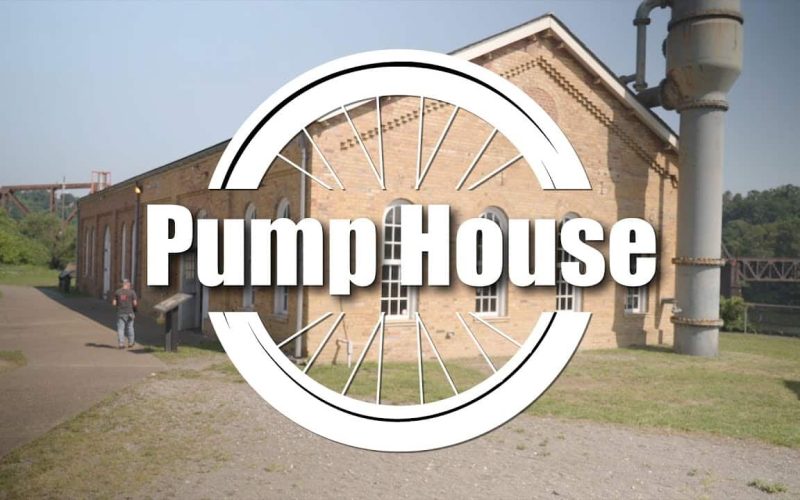A pump house is a facility that houses pumps and equipment used to transfer fluids in different infrastructure systems.
Whether it’s supplying water to canals, draining excess water from land, or managing wastewater, pump houses play a vital role in maintaining the smooth operation of various water systems.
So, what exactly does a pump house do? In simple terms, it ensures that fluids, such as water and sewage, are efficiently pumped from one place to another.
By doing so, pump houses help maintain proper water distribution, prevent flooding, and facilitate the transport of wastewater for treatment.
The construction and design of a pump house are critical factors to consider.
It must be well-insulated to protect the pressure system from freezing and contamination.
The framing with insulation, reinforced concrete floors, and proper heating are essential elements that ensure the pump house functions effectively.
When constructing a pump house, location is key. It should be situated on higher ground, away from the well, and solely dedicated to housing water facilities and equipment.
The water distribution system within a pump house is another important aspect.
It includes primary and secondary feeders and small distribution mains that deliver water to residences and other draw-off points.
In conclusion, a pump house is more than just a facility; it’s a crucial component in maintaining the functionality of water systems.
It helps prevent floods, ensures proper water distribution, and enables the safe transport of wastewater for treatment.
So next time you see a pump house, remember its integral role in keeping our water systems running smoothly.
The Functions of a Pump House
The pump house serves various functions in water systems, including maintaining water levels and removing water from low-lying areas.
It plays a crucial role in canal water supply, land drainage, water pumping stations, and wastewater pumping stations.
By housing pumps and equipment, the pump house facilitates the movement of fluids from one place to another.
In water systems, pump houses ensure proper water distribution and prevent flooding.
They help maintain water levels in canals and reservoirs, ensuring a sufficient supply for irrigation and other purposes.
Additionally, pump houses play a vital role in removing excess water from areas prone to flooding or waterlogging, protecting infrastructure, and preventing damage to property.
Another important function of pump houses is the transportation of wastewater for treatment.
By pumping sewage from various sources, such as households and commercial buildings, to treatment plants, pump houses help maintain sanitary conditions and prevent contamination of water sources.
The Functions of a Pump House in Brief
To summarize, pump houses serve multiple functions in water systems.
They are responsible for maintaining water levels, preventing flooding, and transporting wastewater for treatment.
Without these pump houses, the effective functioning of water infrastructure would be compromised, and the community’s overall well-being could be at risk.
Importance of Pump Houses in Water Systems
Pump houses play a vital role in water systems by ensuring efficient water distribution, preventing flooding, and facilitating wastewater transport.
These essential structures are integral to maintaining the balance and functionality of water infrastructure.
One of the primary functions of pump houses is to ensure efficient water distribution.
They help regulate the flow and pressure of water, ensuring that it reaches the intended destinations in a controlled and consistent manner.
By maintaining optimal water levels and pressure, pump houses ensure that water is readily available for various purposes, including domestic use, irrigation, and industrial processes.
In addition to water distribution, pump houses also play a critical role in preventing flooding.
By removing excess water from low-lying areas, such as canals or basements, pump houses help mitigate the impact of heavy rainfall or rising water levels.
This proactive approach safeguards infrastructure and property and helps protect the environment by preventing waterlogging and soil erosion.
Pump Houses for Wastewater Transport
Furthermore, pump houses are instrumental in facilitating the transport of wastewater to treatment plants.
They pump sewage from residential, commercial, and industrial areas to specialized facilities where it can be processed and purified.
This crucial step in the wastewater management process helps prevent contamination of water bodies and ensures the safe disposal or reuse of treated water.
In conclusion, pump houses are integral to the functioning of water systems.
They ensure efficient water distribution, prevent flooding, and facilitate the transport of wastewater for treatment.
By maintaining optimal water levels, pump houses contribute to the sustainable use and management of this precious resource, ensuring its availability for generations to come.
Pump House Construction and Design
Constructing a pump house requires careful consideration of factors like insulation, reinforced concrete floors, and heating systems.
These elements are essential in protecting the pressure system from freezing during cold weather conditions and preventing contamination.
Insulation plays a vital role in keeping the temperature inside the pump house stable, ensuring the pumps and equipment operate efficiently.
In terms of flooring, reinforced concrete is the preferred choice for its durability and strength.
A sturdy floor is necessary to support a pump house’s heavy machinery and equipment.
Additionally, a well-designed heating system is crucial to maintain an optimal environment for the pumps and prevent freezing or damage to the system.
Proper heating ensures that the pump house functions reliably year-round.
When it comes to the design of a pump house, it is important to locate it on higher ground, away from the well, or any potential sources of contamination.
This helps prevent foreign substances from entering the system, ensuring the quality of the pumped fluids.
The pump house should be constructed solely for housing water facilities and equipment, providing a dedicated and secure environment for pumping operations.
There are different types of pump houses depending on their specific purposes.
For example, water pumping stations focus on supplying water to various areas, while wastewater pumping stations deal with the transportation of sewage for treatment.
These diverse types of pump houses require unique designs and construction considerations to meet their specific operational requirements.
Water Distribution System in a Pump House
The water distribution system within a pump house consists of primary and secondary feeders, along with small distribution mains that supply water to various locations.
These feeders and mains are essential for ensuring a steady supply of water to different areas, such as residences, commercial buildings, and public facilities.
The primary feeders receive water directly from the pumping stations, carrying it to the pump house for further distribution.
From the primary feeders, the water is then transferred to secondary feeders.
These secondary feeders help regulate and control the flow of water, ensuring that it reaches the designated areas with the appropriate pressure.
They act as a network of pipelines that can be adjusted to accommodate the water demand of different locations.
In addition to the feeders, small distribution mains are responsible for delivering water directly to individual properties and draw-off points.
These mains ensure that water is available for everyday use, such as drinking, cooking, and cleaning.
They are connected to the secondary feeders and are designed to supply water efficiently and effectively to the end users.
Overall, the water distribution system in a pump house plays a crucial role in ensuring a reliable water supply for various purposes.
It allows for efficient water distribution to different locations, ensuring that everyone has access to clean and potable water.
The primary and secondary feeders, along with the small distribution mains, work together harmoniously to ensure the pump house’s proper functioning and the uninterrupted water flow throughout the infrastructure system.
In Conclusion: The Importance of Pump Houses in Water Systems
In conclusion, pump houses are essential components of water systems, ensuring proper water distribution, flood prevention, and wastewater management.
These facilities play a crucial role in various infrastructure systems, such as canal water supply, land drainage, water pumping stations, and wastewater pumping stations.
Pumping stations housed in pump houses are responsible for maintaining water levels, removing excess water from low-lying areas, and efficiently transporting sewage to treatment plants.
By facilitating the movement of fluids from one place to another, pump houses contribute to water systems’ overall functionality and efficiency.
To effectively perform their functions, pump houses must be well-insulated to protect the pressure system from freezing and contamination.
They should be strategically located on higher ground, away from the well, and only used for housing water facilities and equipment.
The construction of a pump house involves framing with insulation, a reinforced concrete floor, and proper heating to prevent freezing.
Cooling water tunnels may also be necessary to carry water from intakes to the pump chambers.
The water distribution system within a pump house consists of primary and secondary feeders and small distribution mains that provide water to residences and other draw-off points.
This system ensures that water is distributed efficiently and effectively, meeting the needs of individuals and communities.
In summary, pump houses are more than just structures containing pumps and equipment.
They are integral to the functionality and reliability of water systems, offering vital services for water distribution, flood prevention, and wastewater management.
With their crucial roles and carefully designed construction, pump houses contribute to communities’ overall well-being and sustainability.








